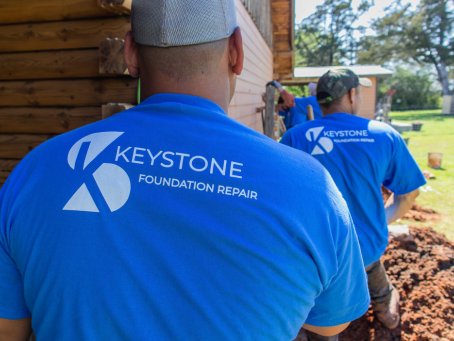The Key Differences in Residential vs Commercial Foundation Repairs
- Keystone Foundation Repair
- Jul 24, 2024
- 3 min read

When it comes to foundation repair, understanding the key differences between residential and commercial projects is crucial. At Keystone Foundation Repair, we've honed our expertise across both sectors, ensuring stability and longevity for structures of all kinds. Here’s a breakdown of the main distinctions between residential and commercial foundation repairs.
1. Scale and Complexity
Residential: Homes typically have smaller foundations than commercial buildings. Repairing residential foundations often involves straightforward techniques such as slab jacking, piering, or patching cracks. Since the scope is generally more confined, the repair process can be faster and less complex.
Commercial: Commercial foundation repairs are more extensive due to the larger size and weight of the buildings. These projects may require advanced engineering solutions and specialized equipment. The complexity is further increased by factors such as the type of business operations and the presence of heavy machinery within the structure.
2. Building Codes and Regulations
Residential: Residential properties adhere to local building codes, which are usually less stringent compared to commercial codes. Homeowners must ensure their repairs comply with these codes, but the process is typically straightforward and involves fewer bureaucratic hurdles.
Commercial: Commercial buildings must comply with more rigorous building codes and safety regulations. These standards ensure the safety and stability of structures that accommodate large numbers of people. Navigating these regulations requires a thorough understanding of local, state, and federal codes, making the process more demanding.
3. Soil and Environmental Considerations
Residential: The soil conditions for residential properties vary, but the impact on the foundation is generally more predictable. Common issues include soil settlement, erosion, and expansive clay soils, which can be addressed with conventional repair methods.
Commercial: Soil analysis is more critical for commercial properties due to their larger footprint and higher load-bearing requirements. Commercial projects often require detailed geotechnical evaluations to determine the appropriate foundation repair techniques, which vary significantly based on soil composition and environmental factors.
4. Cost and Time Factors
Residential: Foundation repairs for homes are generally less expensive and time-consuming. The smaller scale and more straightforward methods translate to lower labor and material costs. Depending on the severity of the damage, most residential repairs can be completed within a few days to a week.
Commercial: The cost and duration of commercial foundation repairs are significantly higher. The need for specialized equipment, additional manpower, and compliance with stringent codes all contribute to increased expenses. These projects can take weeks or even months to complete, particularly if they involve complex engineering solutions.
5. Impact on Daily Operations
Residential: Homeowners may experience temporary inconvenience during foundation repairs, but the impact on daily life is usually minimal. Families can often remain in their homes while the work is being done, with disruptions kept to a minimum.
Commercial: For businesses, foundation repairs can significantly impact operations. Depending on the severity and location of the damage, it may be necessary to temporarily close the business or relocate operations. This can result in lost revenue and additional costs, making it essential to plan repairs carefully to minimize downtime.
Choosing the Right Professionals
Whether it’s a cozy family home or a sprawling commercial complex, foundation repairs demand a high level of expertise and precision. At Keystone Foundation Repair, we tailor our approach to meet the unique needs of each project, ensuring a solid foundation for your property’s future. Contact us today to learn more about how we can help keep your building safe and secure.
.png)



Comments